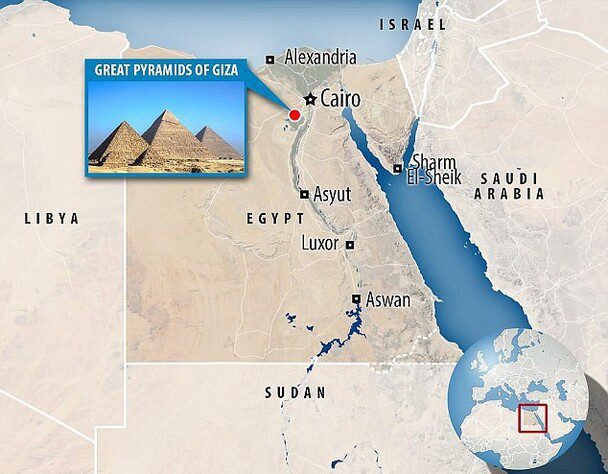Egypt launches EGP 1bn ‘Alliance & Development’ initiative to drive regional innovation
Ayman Ashour, Minister of Higher Education and Scientific Research, has launched the competitive call for the presidential initiative ‘Alliance and Development’ to establish seven regional alliances aimed at stimulating innovation across the country, with funding reaching up to EGP 1bn. This marks the beginning of the implementation of the national policy for sustainable innovation.
Ashour stated that the ‘Alliance and Development’ initiative is a presidential initiative introduced by the Ministry of Higher Education and Scientific Research. It aims to maximize the outputs of scientific research as an effective tool for implementing the Egyptian government’s 2024-2026 work program by forming alliances that stimulate innovation and entrepreneurship in partnership with the public and private sectors. Each alliance will operate within a specific promising sector with high economic growth, primarily based on emerging technologies such as artificial intelligence. Each alliance will carry out its activities within a defined geographical or regional scope to maximize benefits, making each alliance a driver of economic development, a hub for innovative ideas, and a pioneer in creating job opportunities, thereby optimizing resource utilization and fostering knowledge exchange, which significantly contributes to wealth creation, equality, and social justice.
Ashour added that the development alliances will be formed through a competitive call, with each accepted alliance receiving accreditation for three years, benefiting from the initiative’s funding and services. Each alliance will receive total funding between EGP 90m and EGP 150m, with an annual allocation ranging from EGP 25m to EGP 60m. The funding will be provided in the form of grants and investments, with activities and services co-financed in partnership with the alliance. Several workshops will be held to design a sustainable innovation ecosystem, invest in competitive advantages, accelerate regional entrepreneurship, and maintain the trajectory of entrepreneurial acceleration.
He emphasized that the purpose of each alliance must be defined by identifying targeted sectors, with clear economic development goals for its members and community. These include attracting investments within the alliance’s sector and geographical scope, creating high-value job opportunities in the specified sector, increasing the volume of exports for alliance companies, and facilitating financing and investment structures such as venture capital funds and seed investment networks. Additionally, the initiative aims to develop facilities and institutions that support business establishment and attract entrepreneurs, such as incubators, co-working spaces, and startup accelerators, while fostering industry-research partnerships to produce competitive products and services both locally and internationally.
Ashour highlighted that the alliance must define its members and maintain diversity, including academic institutions, universities, private sector companies, development and community organizations, training centers, and business support centers. A geographical scope will be specified for different activities, and a steering committee representing all partners will be established. The members of each alliance will collaborate within a specific sector and geographical region to produce high-value innovations that address global market needs and local challenges through intensive interactions and shared contributions in human resources, technology, facilities, knowledge, and expertise, ultimately benefiting alliance members and the surrounding community positively.
Hossam Othman, Deputy Minister for Innovation and Scientific Research, stated that the alliance’s activities, contributing partners, and beneficiaries will be determined along with an execution timeline. The initiative aims to implement activities and services that promote innovation and entrepreneurship for the economic development of the alliance members and their communities through an approved action plan. This includes training programs, human resource development, joint research and development projects between industry and academia for competitive commercial products based on scientific research outputs, practical student training in companies, support for entrepreneurs, access to funding, and attracting investments for alliance members, startups, and their communities. Additionally, competitions will be launched to discover innovators and entrepreneurs.
Othman added that progress will be measured using target values for performance indicators annually over three years. These indicators will evaluate the alliance’s success in fostering innovation and development among its members and community. Key metrics include the growth in revenue and exports of alliance companies, the number of jobs created through alliance activities, the number of organizations engaged in awareness and outreach initiatives, the scale of activities and beneficiaries, the number of training days and certified trainees, the volume of investment and funding resulting from alliance activities, the number of startups and their revenues and investments, the number of patents and research outputs from industrial-academic collaborations, the volume and number of technology commercialization transactions and patent licenses, and the revenue generated from developed products and services.
Adel Abdel Ghaffar, media advisor and official spokesperson for the ministry, announced that meetings will be held with alliances that pass the preliminary evaluation by the ministry’s initiative team. Each alliance will present its strategic plan, and alliances that successfully complete the presentation phase will be contracted after implementing the required adjustments to their strategic plans.
For the first time in the history of higher education and scientific research, the objectives and pillars of the national sustainable innovation policy will be implemented. This policy includes a set of sub-policies, programs, and initiatives focused on four main pillars: talent availability, technology transfer, access to funding, and improving the work environment. Additionally, three fundamental axes will be emphasized: building research and development capabilities, bridging the gap between research, development, and innovation, and strengthening innovation capabilities. These efforts aim to transform Egypt into a knowledge-based, innovative, and sustainable society, aligning with the national strategy for higher education and scientific research.
The post Egypt launches EGP 1bn ‘Alliance & Development’ initiative to drive regional innovation appeared first on Dailynewsegypt.




